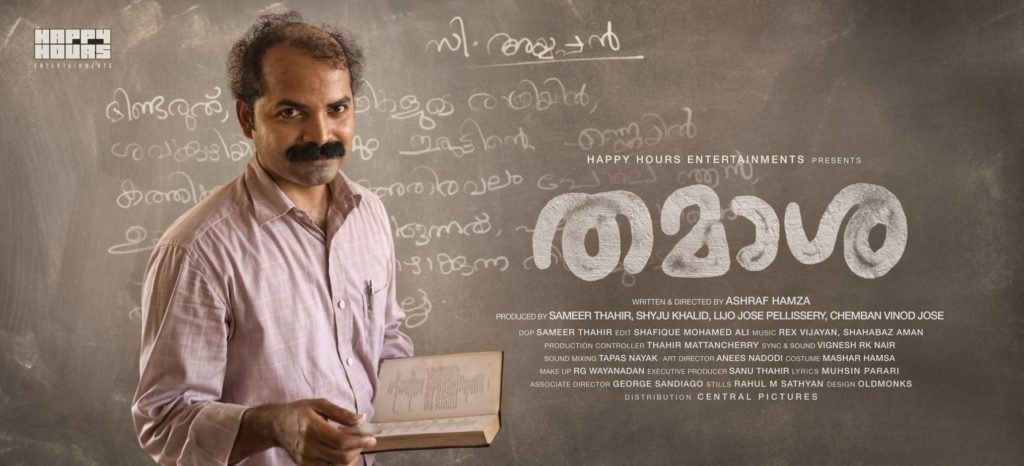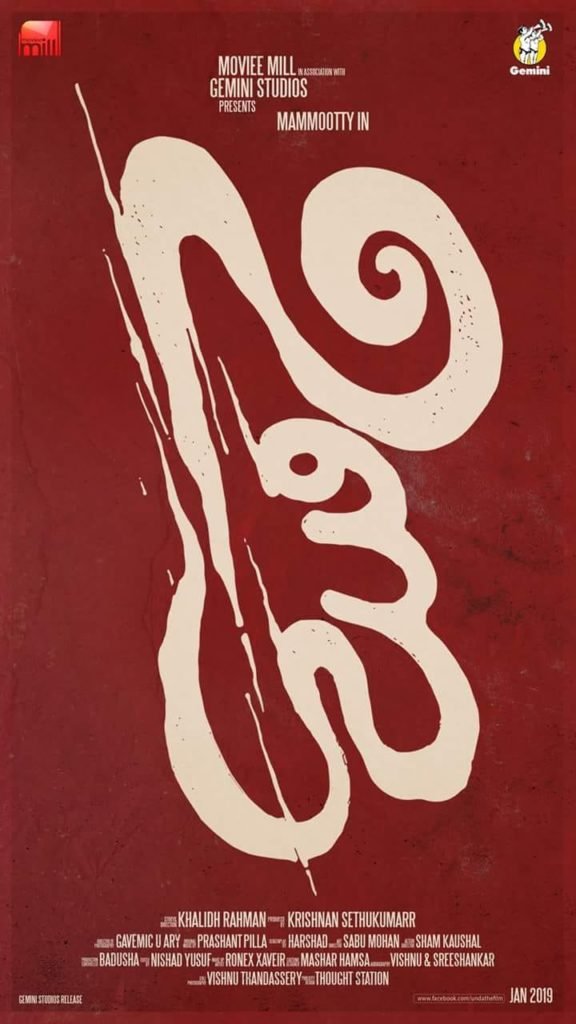One of the main purposes of my active social media use is to be on top of news and promotions related to the Malayalam film industry. I follow most film folks on Facebook not because I like to comment “Sir oru like tharumo!” (Sir, can I get a like (on this comment) please?) but to keep track of new ventures, industry stories, and collaborations. And over the past few years, I have observed few things in online film promotion. Things that turn me off.
A Trend in Online Promotion of Films
There is a new trend of digital film promotion in Mollywood and other Indian film industries. Bollywood does it too, in fact, even more strongly than its contemporaries. Most top-lining films usually start off their online publicity with sending a press release, planting a news story, or having some of the crew share status updates about the new project on social media. At the same time, most production houses choose to create and launch standalone pages on various social media platforms, notably on Facebook.

An example would be the recent announcement of an upcoming film titled Thamasha, produced by Happy Hours Entertainment, and starring Vinay Fortt in a role that looks like it is spun off from his comical character in the 2015 hit romantic comedy Premam. The announcement – which, as of 15 April, has engulfed a part of the Malayalam social media after it was shared and reshared by the people close with the cast and crew – came alongside a poster featuring Fortt. It’s a great announcement and one that achieves its intended goal: pique its audience’s interest. But the problem is that it may not be the first look poster even though the announcement says it is.

Take the poster of another upcoming film, the Mammootty-starrer titled Unda (2019). This was released a few months ago when the filming was still underway. There were no major announcements and this poster somehow made an entrance into the social media, probably through its two Facebook pages (here: Unda The Movie and UNDATheFilm). The film’s IMDb page also sports this poster (because I added it and the film’s PR never bothered to take a gander). As someone who depends on the Internet to extract updates about new Malayalam films, I took this poster as the first look image. Because a first look (often abbreviated as FL by agencies who run the handles for these films for the sake of hashtagging convenience) does not have to reveal the first look of the main actors. It is not to be taken literally. Instead, a first-look publicity image should give out the unique vibe of that film, and this one by Unda actually did, again making me very interested in the project. Then, I don’t understand why there was a need for another first look (see further below).
All of this makes me wonder about the chronology of film promotion in this digital age. Here’s a list that I came up with recently, inspired by a comment by a Reddit user (u/nandusdas091) on r/Kerala, and exaggerated to stay true to the nature of this website.
Chronology of Digital Film Promotion
This focuses on the Malayalam film industry; a list of events that occur one after other in any modern-day promotional campaign for a film that has enough budget to produce and disseminate publicity materials.
- Rough first look or a media story planted in an unverifiable news site
- First look announcement (#firstlook #<title>loading #getready)
- First look (usually a hand of the lead star, a prop if it’s a sequel or a series instalment, or the title design)
- Motion poster announcement
- Motion poster
- Sneak peek
- Character posters #1 through #5 (of characters that have less than 5 minutes of screen time)
- Teaser announcement
- Promo teaser (also sometimes erroneously titled as prologue teaser), or
- Teaser (without any characters)
- First song (lyrical)
- Screenshot of the teaser video trending on YouTube
- Character posters #6 through #30 (the last one is usually of the lead actor or of a character that should have been kept secret)
- Promo poster featuring an inflated number of views that the teaser received in the last 24 hours
- Reshares of mentions in the media and by other actors not involved in the project
- Audio launch announcement/trailer
- Posters containing random birthday wishes for the cast/crew
- Teaser reaction videos (disseminated through unofficial, partner networks containing wannabe YouTubers)
- Audio launch at an Ernakulam 5-star banquet hall (usually owned by one of the crew members) with the highlight being a life-sized disc held by everyone excluding the music producer
- First video song
- Trailer announcement
- Teaser to the trailer
- Trailer launch at a Trivandrum 5-star banquet hall
- Trailer appended to major film releases of that weekend
- Trailer on social media by a popular actor not involved in the project (a day after it appears on the big screen)
- Screenshot of the trailer video trending on YouTube
- Trailer reaction videos
- Poster featuring an inflated number of views the trailer received in less than two hours
- Random stills posted by top cast and crew (with at least half a dozen hashtags)
- Poster containing greetings for an eligible festival or public holiday
- Cast and crew interview videos
- Poster featuring some unknown and useless record broken by the trailer
- Poster featuring a list of achievements by the teaser, the trailer, and the audio jukebox
- Final official poster with the ensemble cast appearing on it
- Film success trailer (two days after release)
- Film success celebration photos (at another Ernakulam hotel three days after release)
- Making-of videos to get some boost in the revenue of the production company’s YouTube channel
- Posters featuring inflated box office numbers
- Item dance video (optional)
Current State of Affairs
Here’s a peak example of what I’m talking about: a Facebook status update posted by the FB page of Unda, Khalid Rahman’s second directorial. It is true that I was triggered to write this article upon seeing this update on my feed. But I have been observing this digital film publicity chronology for some time now to validate the need for such an article.

Every film – and not just Malayalam-language features – that is projected to at least foot its making cost is following this trend. And going by the volume of engagement on the above post from a page that has upwards of 5600 followers (at the time of publishing), it’s working.
But as a consumer of cinema who is at the receiving end of these brazen, tasteless promotions, it turns me off hugely. You may suggest that I start unfollowing these pages of films and film personalities and production houses, but then what about the downside? It’s a catch-22 situation all right and I can alternatively choose to change the settings on Facebook to receive only highlights. But if I did that, who exactly are they trying to attract and engage?
If everyone thought like me, the engagement would automatically go down, save for the pages of those films with actors who have fan associations so big and powerful the title of these associations are known in Kerala and neighbouring states by their acronyms (e.g.: Prithviraj Sukumaran’s POFFACTIO). It would not really work.
The Risk of Overpromotion
They say any publicity is good publicity, but that’s not true anymore. Look what happened to a recent upcoming biopic of a politician. It had all the right ingredients, and also received a mass of negative press because of its association with a political party, but it was still stalled for release because it would potentially violate the Model Code of Conduct (MCC) which is in motion till the end of 2019 Lok Sabha elections.
Overpromotion – which is quickly influencing the Kerala film industry – does not always work. It can act as cannibalization after a certain point, turning off the discerning audience to the point where he stops caring. After a while, the promotions will stop having an effect on its target audience as people will shun the digital campaigns and consider movies based on star value, interest, and word of mouth. (The last one is still one of the biggest factors in global cinema, with examples from Bollywood like Stree (2018), Tumbbad (2018), and Andhadhun (2018) loud and clear.)
I do not agree with executing a 39-point marketing strategy on social media because it is dumb. It can act as a deterrent more than it can as a magnet. Of course, an active official profile on Facebook or Twitter would do good to educate the audience about an upcoming project, especially to act as a standalone profile for when someone searches for it to find more information if the film is not yet live on Wikipedia and IMDb, that is. But going overboard with it can sometimes be risky and cost-ineffective.
It may be a tactic used by social media management agencies (who usually work remotely) to bill their clients extra (for all the man hours), but we must look at the bigger picture and see where exactly this type of promotions is going. Is it some kind of a groundbreaking marketing strategy that demands a deeper study? No. Is it a novel approach? No, everyone does it and has been doing it for some time now. Is it effective? Maybe. In 2019 so far, films like Lucifer, Oru Adaar Love, and Madhura Raja succeeded in pulling it off and getting the seats filled, notwithstanding their consequent critical or box office successes. But there are others – like 9, Praana, and June – that deployed similar but largely ineffective campaigns.
Bringing It a Few Notches Down
Same goes for films that think out of the box, do something unusual, and still fail without even getting credit for trying. A case in point: When Rohith VS’s Iblis (2018) launched an online game as part of its promotions, it did not aid much in attracting any more audience than it would have without the game. Its Facebook page had over 20,000 followers and yet the game-related posts received measly engagement, and Asif Ali is still an actor with some fan following. It fared comparatively well with its series of posters, one of the best we saw in 2018.

Which is why it is important to also attribute the success of such granular marketing campaigns to a film’s star value. In fact, this star value has more to do than the stunts themselves. You don’t see such campaigns being run for films that feature an actor who doesn’t have an official fan association. Think of the marketing tactics by the PR team of a film starring Mohanlal and then compare it with another having lesser-known actors like Sreenath Bhasi, Shane Nigam, and Soubin Shahir. Even though the quality of a film eventually decides its success rate, such viral social media promotions help the producers mint more money during the deciding first weekend. And it is evident that it is working. Which is not the right way to do business.
Then there are films like Premam that make do with a few characterless posters and a song to market itself and break some actual records. TN.
Update: Updated information about the two different Facebook pages for Unda. (15 April 2019)
3 responses to “The Chronology of Modern-Day Film Promotion”
[…] « The Chronology of Modern-Day Film Promotion […]
[…] fabulous poster designs that promoted these very films – both good and bad – through their various, often unnecessary, stages of […]
[…] But while we’ve talked about novel methods used, these are soon becoming the norm as observed by Tejas Nair who lists down 39 steps usually observed in a typical SM Promo cycle. […]